Over 25 Questions on Creation/Evolution and the Bible
|
Ken Ham
General Editor 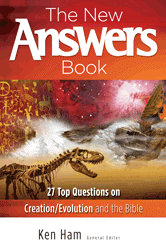
|
Here's the perfect book for answering the most-asked questions about
Creation/Evolution and the book of Genesis. The chapter titles reveal the
broad, thought-provoking range of questions that are dealt with.
Highly Recommended
|
|
D. Russell Humphreys, Ph.D.
Contemporary 
|
Russ considers the question "How could we see the light from stars that are
hundreds of light-years away if the universe was created only a few thousand
years ago?" and offers a provocative solution… Modern physics (General
Relativity) says that gravity can cause time to pass at a different rate for
observers in one place compared to those in another. This effect would be
especially pronounced in the region of a "black hole". Moreover, scientists
tell us that the universe is expanding. This would imply that all the matter
in the universe was once close enough together to form a "black hole". But,
since the universe is expanding rather than contracting, it would really have
been a black hole running in reverse. Scientists call this a "white hole".
Russ says that, when the universe was just 1/50th of its present size, it would
have formed a white hole. Surrounding every black (or white) hole is its
"event horizon". For a normal (contracting) black hole, the gravitational
forces are so intense that nothing inside the event horizon—not even
light itself—is able to escape. That is why it is termed a "black"
hole—light and matter can enter, but they can never escape. For a "white
hole", the situation is reversed—light and matter can leave, but they
cannot enter the event horizon. As matter is ejected from a "white hole", the
radius of the event horizon decreases and eventually the "white hole"
disappears altogether. Near the event horizon, the passage of time is
distorted. Time passes more slowly for those near the event horizon than for
those who are far away from it.Suppose an astronaut travels to the edge of a
black hole's event horizon and then returns home. The trip might take only a
few years for him, yet he could return to find that hundreds of years had
passed while he was gone. Russ suggests that the earth is situated near the
center of the universe, and that only a few days of the creation week had
passed on earth when the contracting event horizon reached the earth. During
the time when earth was near the event horizon, billions of years of galactic
time could have transpired—with plenty of opportunity for stars and
galaxies to form, for the universe to expand to its present size, and for light
to travel the enormous distances to reach the earth. Russ' novel theory
challenges an arbitrary assumption that scientists make, called the
"cosmological principle". This assumption says that matter is uniformly
distributed throughout the universe—that the universe has no edge and no
center. In other words, there is no place in the universe where you have
passed the "last star" and there is just emptiness beyond. The
"cosmological principle" is essential to the "Big Bang Theory", but it
is an arbitrary assumption. Russ has a Ph.D. in physics from Louisiana State
University and worked as a physicist for Sandia National Laboratories. His
theory has been reviewed by qualified peers, and he has successfully answered
challenges posed by critics of his theory. The book is very readable, yet Russ
has included Appendices for the more technically advanced reader.
Very Highly Recommended |
God's Universe Rediscovered
|
Alex Williams
Dr. John Hartnett 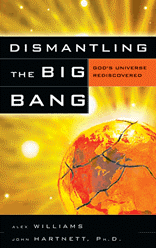
|
The authors accurately explain the technical issues of modern cosmology in
layman's terms, revealing the numerous unproven ad hoc assumptions that
underlie the Big Bang theory, and the many problems that plague the theory.
They show that the Bible presents a cosmology that fits the evidence
beautifully. Some of the issues discussed include: *Limitations of science
*Science and faith *Human frailty and scientific objectivity *What does it mean
to 'explain' something? *The anthropic principle *Intelligent design *Possible
and impossible events *Quantum mechanics *The four fundamental forces *The six
main events of the Big Bang model *Extrapolation back to a singularity is an
unproven assumption *The laws of physics break down in a singularity *The
origin of the Big Bang is unexplained and amounts to a miracle *The inflation
stage—What caused it? What stopped it? *The Flat Universe Problem *The
Horizon Problem *Problems with the Cosmological Constant *Net rotation of the
universe disproves the Big Bang theory *The problem of forming stars and
galaxies *The problem of forming heavy elements *Alternative explanations of
the CMBR *Dark matter and dark energy *Relativistic time dilation *Alternative
cosmologies
Very Highly Recommended!
|
Challenging an Icon of Evolution: Questioning the Age of the Earth
|
Don DeYoung
Contemporary 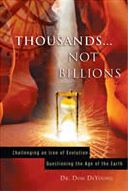
|
Dr. DeYoung discusses geological evidence that demonstrates a young age for the
earth and exposes the commonly-assigned dates as unreliable and contradictory.
He presents evidence of significant levels of Carbon-14 in coal and diamond
deposits that are allegedly millions or billions of years old. He discusses
the significance of pronounced Polonium radiohalos in granite rocks. He also
explains how unexpectedly high levels of Helium in mineral samples is evidence
for ages measured in thousands, rather than millions of years.
Very Highly Recommended
|
|
R. L. Wysong, DVM
Contemporary 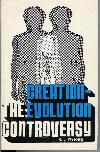
|
Wysong's book is a classic. He cites overwhelming physical evidence and
quotations from Evolutionist authors to prove the case for Creationism.Yet, he
does it with a very respectful tone, and is careful to employ a balanced,
objective approach in examining the two positions.
Highly recommended!
|
|
Philip E. Johnson
Contemporary 
|
Johnson is a law professor at the University of California-Berkeley. "So what
does a law professor know about Evolution?" you ask. As much as anyone who
does his homework on the subject! When you consider that lawers and judges make
it their business to recognize faulty arguments, evasion and obfuscation,
Johnson is eminently qualified to weigh the arguments of Evolutionist
propagandists and sift out the essential issues. Johnson writes in a clear,
engaging style, exposing one of the foremost deceptions of our day.
Highly recommended! |
|
Duane Gish, Ph.D.
Contemporary 
|
The fossil record is often touted as the great proof of Evolution. Yet, the
fossil record does not contain the intermediate forms that Evolution asserts
must have existed. Gish gives extensive documentation from Evolutionist writers
to demonstrate that the fossil record contradicts many of the claims of
Evolution, and that it supports the Biblical account of special creation and a
worldwide flood.
Highly recommended!
|
|
Henry Morris, Ph.D.
John C. Whitcomb 
|
This is a classic, scholarly work documenting the physical evidence in support
of the Bible's account of special creation and a subsequent worldwide flood.
It also addresses the various common arguments against a universal flood.
A true classic!
|
|
Sir Karl R. Popper
Contemporary 
|
This is a scholarly work on the philosophy of science. Popper deals with issues
like 'What constitutes a valid hypothesis?' and 'What sort of physical evidence
would it take to prove or disprove a hypothesis?' Popper was not a Creationist,
but he is very clear and insightful in defining the scientific method... a true
logician. Evolutionary theory does not measure up to Popper's definition of
science, which must be both repeatable and falsifiable.
Highly recommended!
|
|
Henry Morris
Contemporary 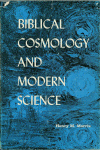
|
Morris does a good job of refuting two of the theories that try to reconcile
the Bible with an old-earth hypothesis ... the "Gap Theory"and the "Day-Age
Theory." The book has other virtues as well.
|
|
Henry Morris, Ph.D.
Contemporary 
|
Morris looks at the influence of Evolution in society, the case against
Evolution, the fossil evidence, the mechanism of sedimentation to produce rocks
and fossils, the origin of Evolution as a theory, and its ultimate demise (i.e.
as a viable scientific theory, and ultimately, when Christ returns).
|
|
John G. Hartnett, Ph.D.
2007 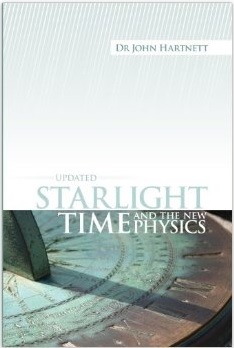
|
Dr. Hartnett built on the work of Israeli physicist, Moshe Carmeli, to develop
a new cosmology—a modification of Einstein's theory of General
Relativity—that explains the spiral structure of galaxies without needing
to invoke exotic, hypothetical concepts like dark matter or dark energy. His
new theory also explains how we can see distant starlight in a universe that is
only 6000 years old by earth standards. Dr. Hartnett gives some helpful
examples from history showing that when scientists make discoveries not
predicted by their current theories, they try to add fudge factors to their
theory or postulate the existence of some unknown entity to account for the
anomalies, when in reality their theories needed to be replaced by a new theory
that could properly account for, and predict, the new evidence. He suggests
that this is what we are seeing today with the "Big Bang" theory and its
recourse to "dark energy" and "exotic dark matter". He finishes the book with
six technical appendices for readers who wish to examine the finer details of
his theory.
Very Highly Recommended!
|
A theological, historical and scientific commentary on Genesis 1-11
|
Jonathan Sarfati
2015 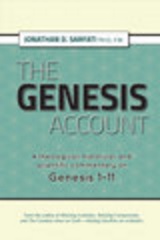
|
This classic commentary on Genesis 1–11 contains a thorough analysis of the
text itself, and has a number of features that set it apart from many other
Genesis commentaries: It defends the biblical creationist position: creation
in six consecutive normal days, death resulting from Adam’s fall, and a
globe-covering Flood, and confusion of languages at Babel, and in the process
it explains how the rest of the Bible interprets Genesis in the above
straightforward manner. While skillfully documenting how interpreters
throughout Church history have taught the above, and that long-age
death-before-sin views were a reaction to 19th-century uniformitarian geology,
it also provides cutting-edge scientific support for the Genesis history.
Importantly it demonstrates that all doctrines of Christianity begin in Genesis
1–11, and straightforwardly answers the commonest objections to a plain
understanding of these crucial Genesis texts.
Very Highly Recommended! |
15 Ph.D. scientists explain evolution's fatal flaws--in areas claimed to be its greatest strengths
|
Don Batten
Robert Carter, Jonathan Sarfati, John Hartnett, et. al. 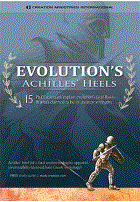
|
Visually stunning animations and dramatic footage help to show how the theory’s
supposed strengths are, in fact, its fatal flaws—Evolution’s Achilles’ Heels.
Like no other work that we are aware of, fifteen Ph.D. scientists colaborated
to produce a coordinated, coherent, powerful argument. All of the contributors
received their doctorates from similar secular universities as their
evolutionary counterparts. Each is a specialist in a field relevant to the
subject: Natural selection, origin of life, geology, genetics, radiometric
dating, the fossil record, cosmology, and ethics. Evolution’s Achilles’ Heels
directly demolishes the very pillars of the belief system that underpins our
now-secular culture—evolutionary naturalism. It’s coupled with the Biblical
command to reach the lost with the Bible’s Good News. In a nutshell, it’s a
comprehensive outreach tool like no other. The fifteen Ph.D. scientists
include Donald Batten, Robert Carter, David Catchpoole, John Hartnett, Mark
Harwood, Jim Mason, Jonathan Sarfati, Emil Silvestru and Tasman Walker.
Special Features: * Scientist biographies * Over 20 minutes of extended
interviews * Subtitles in 16 languages: Afrikaans, Chinese (simplified),
Chinese (traditional), Dutch, English, French, German, Greek, Indonesian,
Italian, Japanese, Korean, Polish, Portuguese, Russian, Spanish
Very Highly Recommended!
|
|
Jonathan Sarfati
2011 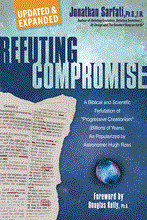
|
With his usual brilliant clarity, Jonathan Sarfati, author of the best-selling
Refuting Evolution (Vols. 1 and 2) has produced a comprehensive and resounding
refutation of the position of 'progressive creationist' Hugh Ross, whose views
are causing massive confusion about science and the Bible. The most powerful
and scientific defence of a straightforward view of Genesis creation ever
written.
Very Highly Recommended!
|